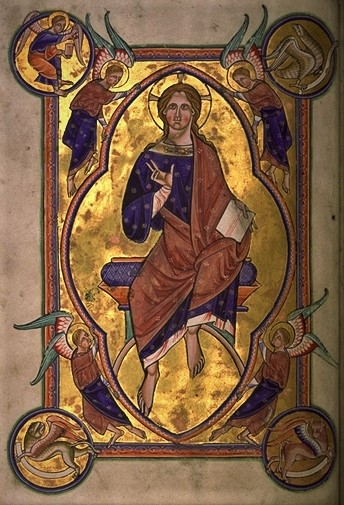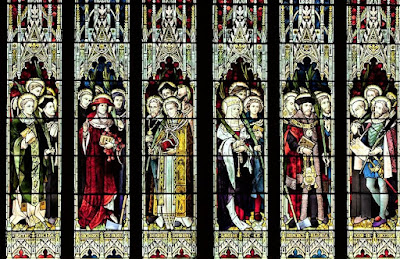Jesus said, "Truly, truly, I say to you, he who does not enter the sheepfold by the door but climbs in by another way, that man is a thief and a robber; but he who enters by the door is the shepherd of the sheep.
– St. John 10:1, 2
One of the beautiful images we have of Jesus is as our Shepherd. Scripture says that we are “the people of His pasture and the sheep of His hand.” He is our crucified and risen Shepherd. He died as a Lamb to save the sheep, and He lives to guide His flock to eternal life.
The Lord Jesus is, in a special way, the incarnation of the twenty-third Psalm. He shepherds us, and we rest in the green pastures of His presence. He anoints our heads with the oil of His Spirit in the quiet waters of Holy Baptism. He prepares the table of the Holy Sacrifice of the Mass in the presence of our fiercest enemies - sin, death, and the devil - and He feeds us with His own Body and Blood. He restores our souls by forgiving our sins. He guides us in the paths of righteousness by His Word, which is the rod of His Law, the staff of His Gospel. He leads us through the dark valley of death on to eternal life.
Jesus is the shepherd of the sheep, and He says that He is also the gate of the sheep pen, the “door of the sheep.” He uses a picture of how sheep were raised in that part of the world at that time. Sheep were kept in walled pens during the night for protection. The sheep pen had only one gate. Every morning the shepherd would stand at the gate and call out to his sheep. They would perk up at the sound of his voice and they would follow him through the gate out into the pasture. A devoted shepherd would even sleep on the ground across the opening of the sheep pen during the night to protect his flock. The shepherd literally became the “gate” for the sheep, and he would be willing to lay down his life for his sheep.
The opening to the sheep pen distinguished true and good shepherds from thieves and robbers. You could always tell if a person was a real shepherd by the way he got into the sheep pen. True shepherds entered through the gate in broad daylight in full view of the gatekeeper. False shepherds and thieves would sneak over the fence at night, in order to steal what wasn’t theirs. And so Jesus distinguishes true pastors from false ones. Those who preach Jesus Christ crucified and risen for the forgiveness of sins and who guide people through the waters of baptism on into the rich pasture land of the authentic Word of God, and into the Sacraments established by Christ, are true shepherds. But those who preach themselves and who guide people by their own self-invented methods and means are false shepherds.
Jesus warns us that there are plenty of thieves and robbers and false shepherds all around us. They promise life, but instead, they rob us of life. They teach falsely that Holy Baptism is something we do simply as a sign, instead of teaching that it’s something God does, in which He takes away the stain of sin and marks us as His own. They teach falsely that the Mass isn’t the sacrifice of Christ’s Body and Blood, but rather that it’s simply a symbolic meal in which we think fondly of what Jesus did a long time ago. These false shepherds try to turn people inward to their own beliefs, to their own piety, to their own feelings, to their own works, to their own selves, and away from Jesus and the truth which He reveals through His Holy Catholic and Apostolic Church.
These are the thieves and robbers that Jesus is talking about. They look for the isolated, scattered, solitary sheep. Sheep who are separated from the flock are easy pickings for the poachers. People who aren’t grounded in the Church, and in what Christ teaches us through His Church, tend to believe in a little bit of everything, and so they wind up believing in nothing at all. Sheep who don't learn the voice of their shepherd, soon will follow any voice that happens to call to them.
Jesus came that we might have life, and have it abundantly, and the greatest freedom we can have in this life is to be sheltered in His sheep pen, the Church, to live under Him in His kingdom, to be under the watchful gaze of the crucified and risen Shepherd and Guardian of our souls.
Jesus our Good Shepherd is the door to eternal life, the only door. His death and resurrection pave the only path that leads to eternal life. One day He will stand at the gate and call each of us again by name, as He has already called us in Baptism, as He continues to call us as members of His Body. On that day we will hear His voice and follow Him through His death and resurrection, and He will raise us up, clothed with His immortality, to eternal life in Him.
_________________________________
Painting: "The Good Shepherd" by William Dyce (1806-1864)




.jpg)








.jpg)
